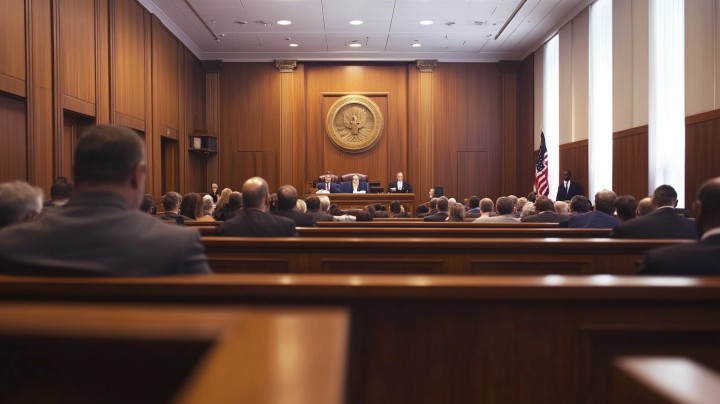Introduction
Contempt of court is a serious charge that can lead to fines, jail time, and other penalties. Understanding the types of contempt, the legal consequences, and the process for bonding out can help individuals navigate this complex legal issue. This article explores these topics in detail and provides practical advice for those facing contempt of court charges.
Understanding Contempt of Court
Definition: Contempt of court is an offense that involves disobeying or disrespecting a court order, disrupting court proceedings, or otherwise interfering with the administration of justice.
Types of Contempt: Contempt of court can be classified into different types, each with specific legal implications and consequences.
Legal Framework: The legal framework for contempt of court varies by jurisdiction, but it generally aims to uphold the authority and proper functioning of the judicial system.
Types of Contempt of Court
Civil Contempt
Definition: Civil contempt occurs when a person fails to comply with a court order, often in a case involving non-payment of child support or failing to adhere to custody arrangements.
Examples: Not paying court-ordered alimony, refusing to follow a court order in a divorce proceeding.
Legal Consequences: Penalties can include fines and jail time until the individual complies with the court order.
Criminal Contempt
Definition: Criminal contempt involves actions that disrespect the court or obstruct the administration of justice, such as outbursts in the courtroom or disobeying a direct order from a judge.
Examples: Shouting at a judge, refusing to answer questions under oath.
Legal Consequences: Criminal contempt can lead to significant fines and jail time as a punitive measure.
Direct Contempt
Definition: Direct contempt occurs in the immediate presence of the court, often involving disruptive behavior during court proceedings.
Examples: Yelling in court, refusing to stand when the judge enters.
Legal Consequences: Direct contempt can result in immediate penalties, including fines or jail time.
Indirect Contempt
Definition: Indirect contempt involves actions outside the presence of the court that disobey a court order or disrespect the court’s authority.
Examples: Failing to comply with a subpoena, ignoring a court-ordered injunction.
Legal Consequences: Indirect contempt may result in fines and jail time, depending on the severity of the offense.
Legal Consequences of Contempt of Court
Fines
Typical Amounts: Fines for contempt of court can vary widely depending on the jurisdiction and the nature of the offense, ranging from a few hundred to several thousand dollars.
Payment Process: Fines must be paid according to the court’s instructions, often within a specified timeframe to avoid additional penalties.
Jail Time
Duration: Jail time for contempt of court can range from a few days to several months, depending on the severity of the contempt and the judge’s discretion.
Conditions of Release: Release conditions may include paying fines, complying with court orders, or other actions to purge the contempt.
Additional Penalties
Community Service: Some courts may order community service as part of the penalty for contempt.
Probation: Probation may be imposed, requiring regular check-ins with a probation officer and compliance with specific conditions.
Bonding Out on Contempt of Court
Eligibility
Factors Considered: Eligibility for bonding out on contempt charges depends on factors such as the nature of the contempt, the individual’s criminal history, and the judge’s discretion.
Restrictions: In some cases, judges may deny bond for contempt charges, especially if the individual poses a flight risk or has a history of non-compliance.
Process
Steps to Obtain Bond: The process involves attending a bail hearing, where the judge will set the bail amount based on the severity of the contempt and other factors.
Required Documentation: Documentation may include proof of identity, financial statements, and any court orders related to the contempt charge.
Bail Amounts
Typical Amounts: Bail amounts for contempt of court can vary but are often set based on the severity of the offense and the individual’s ability to pay.
Factors Influencing Bail: Factors include the individual’s criminal history, flight risk, and the specific circumstances of the contempt charge.
Case Studies and Real-Life Examples
Notable Cases
High-Profile Examples: High-profile contempt cases often involve significant penalties and media coverage, highlighting the importance of respecting court orders.
Legal Outcomes: These cases can result in substantial fines, lengthy jail time, and lasting legal repercussions.
Common Scenarios
Typical Cases: Common contempt scenarios include failing to pay child support, disobeying custody arrangements, and disruptive behavior in court.
Resolutions: Resolutions often involve paying fines, complying with court orders, and in some cases, serving jail time.
Lessons Learned
Best Practices: Complying with all court orders and maintaining respectful behavior in court can help avoid contempt charges.
Avoiding Common Mistakes: Understanding the legal obligations and seeking legal advice when necessary can prevent contempt situations.
Legal Assistance and Resources
Public Defenders
Role: Public defenders provide legal representation to individuals who cannot afford private attorneys, including those facing contempt charges.
Availability: Public defenders are available in most jurisdictions but may have heavy caseloads.
Legal Aid
Finding Legal Help: Legal aid organizations offer assistance to individuals who need help navigating the legal system, including dealing with contempt charges.
Services Provided: Services include legal representation, advice, and resources for low-income individuals.
Online Tools
Legal Resources: Online tools and resources provide information on contempt of court, legal rights, and steps to take if facing contempt charges.
Information Portals: Websites of legal aid organizations, government agencies, and court systems offer valuable information and assistance.
Conclusion
Contempt of court is a serious offense with significant legal consequences, including fines and jail time. While it is possible to bond out on contempt charges in some cases, eligibility and bail amounts vary based on several factors. Understanding the types of contempt, legal processes, and available resources can help individuals navigate this challenging legal issue.
FAQs
Can you bond out on contempt of court charges?
Yes, in some cases, you can bond out on contempt of court charges, depending on the nature of the contempt and the judge’s discretion.
What are the types of contempt of court?
Types include civil contempt, criminal contempt, direct contempt, and indirect contempt.
What are the consequences of contempt of court?
Consequences can include fines, jail time, community service, and probation.
How is bail determined for contempt of court?
Bail is determined based on factors such as the severity of the contempt, the individual’s criminal history, and flight risk.
What resources are available for those facing contempt of court charges?
Resources include public defenders, legal aid organizations, and online legal tools.
What should I do if I receive a contempt of court charge?
Seek legal advice, comply with all court orders, and consider contacting a legal aid organization for assistance.









